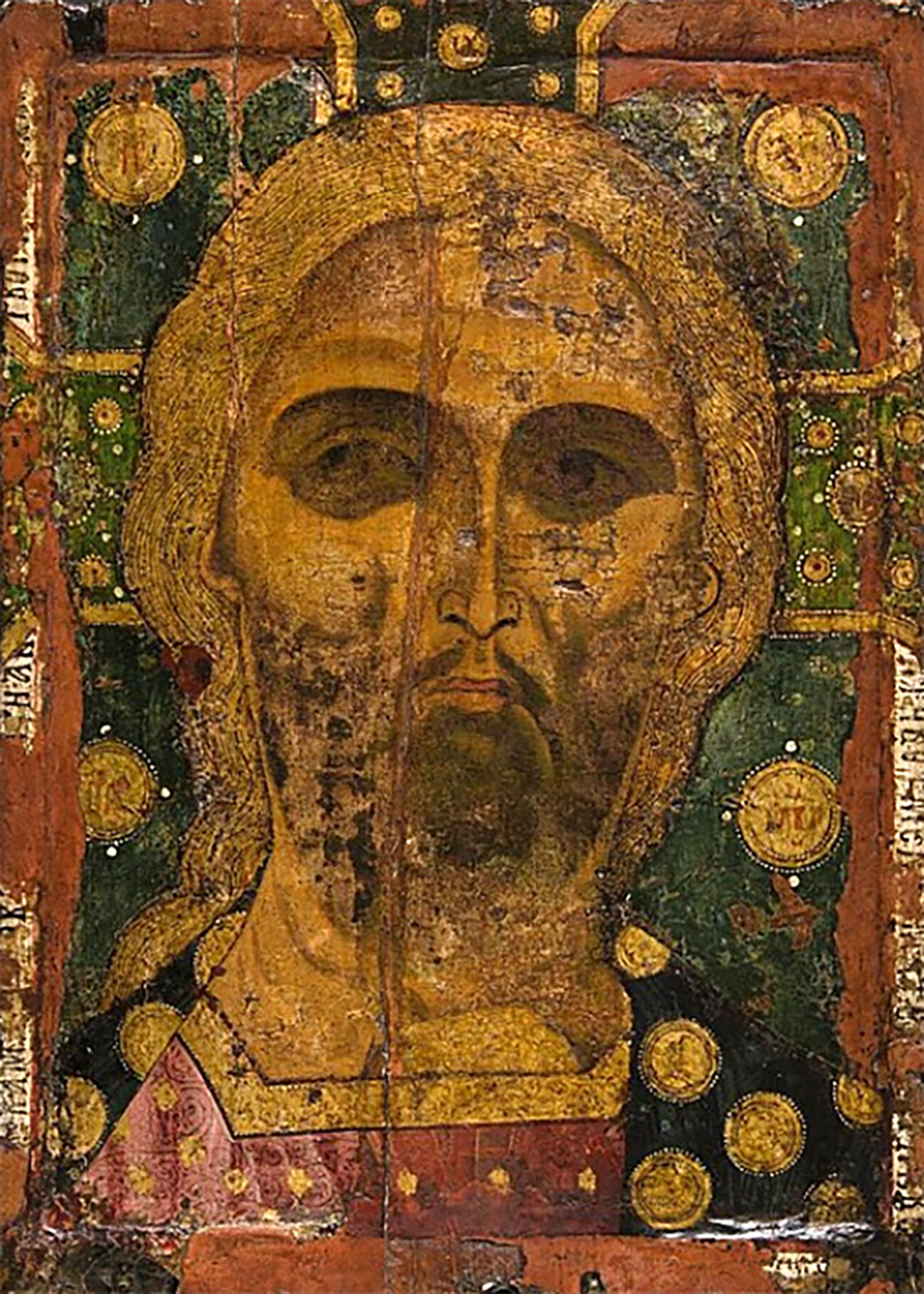
Christ has no nimbus, but, rather, a cross is depicted behind him, instead. The Savior's face and flowing hair, as well as his clothes and medallions around him are painted gold: they convey the divine light that he radiates. One of the inscriptions on the icon reads: "KING OF GLORY". That is, Christ is depicted as triumphant, victorious over death. But, at the same time, as a martyr.
The icon was painted by an unknown artist at the end of the 12th century and beginning of the 13th century, even before the Tatar-Monol invasion in Russia. And it has miraculously survived to this day. Researchers believe that the shrine was intended for the personal prayer of one of the great princes of Vladimir Principality or members of his family.
The title 'Christ with Golden Hair', under which the icon is known, most likely appeared in the 19th century and is connected not with the accepted norms of iconography, but with the artistic features of the image.
In the 16th century, the icon was transported from Vladimir to Moscow. And, since then, it has been kept at the Assumption Cathedral of the Moscow Kremlin. Currently, it and other ancient shrines and artifacts can be seen at the ‘Russian Phoenix. Suzdal Land’ exhibition in the Suzdal Kremlin.
Dear readers,
Our website and social media accounts are under threat of being restricted or banned, due to the current circumstances. So, to keep up with our latest content, simply do the following:
If using any of Russia Beyond's content, partly or in full, always provide an active hyperlink to the original material.
Subscribe
to our newsletter!
Get the week's best stories straight to your inbox